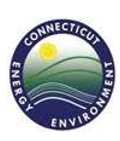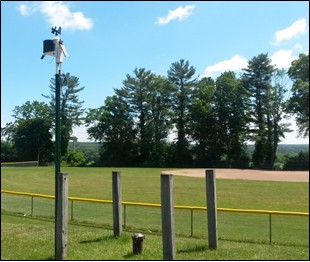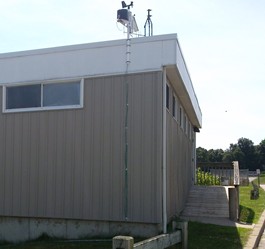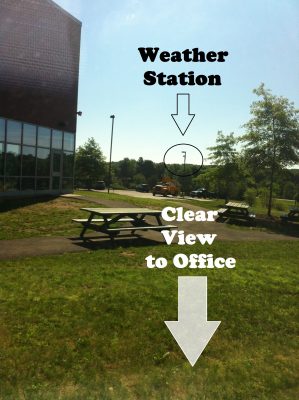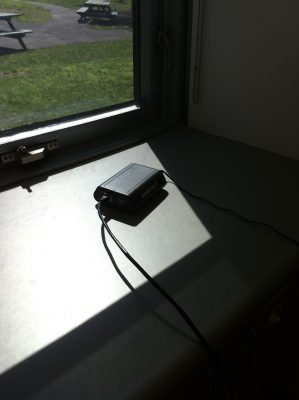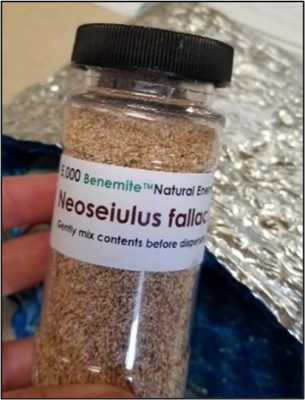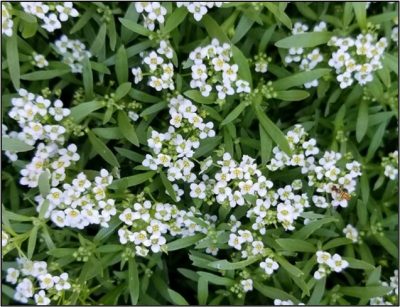Amynthas agrestis, A. tokioensis, y Metaphire hilgendorfi (familia Megascolecidae)
Por Victoria Wallace y Alyssa Siegel-Miles, UConn Extension
Traducido por Carla Caballero
Descripción general:
Si bien la mayoría de las lombrices de tierra no son nativas de los Estados Unidos, muchas especies de lombrices de tierra proporcionan beneficios a los suelos urbanos al ayudar a mejorar la porosidad, el drenaje y la aireación del suelo. La preocupación ha crecido en la última década sobre varias especies de gusanos, predominantemente de Amynthas spp., que se informa que causan daños a los suelos de paisajes, céspedes y bosques. Estas especies, conocidas como gusanos saltadores (el nombre común de varias especies de aspecto similar), pueden cambiar significativamente la textura y la composición de los suelos superficiales.
Identificación:
- Movimiento de golpeteo o “salto” similar a una serpiente cuando se le molesta.
- Alta densidad de gusanos adultos visibles y muy activos cerca de la superficie del suelo desde finales de junio hasta mediados de octubre.
- Brillo suave y metálico, a menudo pigmentado oscuramente (gris oscuro brillante / marrón); de color uniforme. 4-20 cm de largo. Cuerpo brillante, seco, liso y firme; menos viscoso al tacto que otras lombrices de tierra (ej. nightcrawlers).
- El clitellum (anillo) de color blanco turbio a gris rodea el cuerpo de los gusanos adultos; es liso, no elevado y se encuentra más cerca de la parte frontal del cuerpo (Figura 1).
- Puede arrojar “cola” / porción posterior si se recoge o se molesta. Nota: Antes de que el clitellum sea visible, los juveniles pueden ser identificados por su retorcimiento activo, movimientos similares a serpientes y esta capacidad de dejar caer sus colas.
- Las piezas fundidas (heces) son similares a la apariencia y la sensación de los granos de café o la carne molida y son evidentes en la superficie del suelo, a menudo en una capa uniforme y profunda (Figura 4, lado opuesto).

Ciclo de Vida/Reproducción:
- Especies anuales con 1-2 generaciones por año.
- Partenogénico (cada gusano puede autofertilizarse y reproducirse por sí solo sin aparearse).
- En el otoño, los gusanos adultos producen pequeños capullos (cápsulas de huevo endurecido de 2-4 mm de ancho, no más grandes que el tamaño de los granos de pimienta). Los adultos son sensibles a las temperaturas frías y mueren con la primera helada.
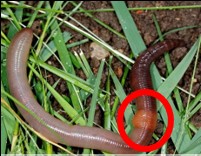
Los capullos pasan el invierno y sobreviven en el suelo, para luego eclosionar continuamente la siguiente primavera y verano, comenzando una vez que las temperaturas del suelo suban por encima de 50o.
Identificación de Gusanos Europeos:
Las lombrices de tierra europeas (ej. nightcrawlers) pueden vivir hasta 8 años y están activas en la primavera y el otoño. Sus cuerpos son de color rosa rojizo, gruesos, viscosos y flojos. La porción anterior suele ser de color más oscuro en comparación con el resto del cuerpo (Figura 2). El clitellum elevado de color rosa-rojizo es más central a lo largo del cuerpo y solo rodea parcialmente el cuerpo (Figura 3). Cuando se les molesta, los gusanos se mueven y estiran lentamente.
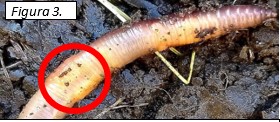
Hábitat:
Los gusanos saltadores se observan cada vez más en paisajes urbanos, gestionados y naturales. Viven en la capa superior del suelo, en escombros y hojarasca. Prosperan en bosques, patios de casas, parques, pilas de compost y bordes de carreteras.
Distribución y Antecedentes:
Originarios de Corea y Japón, los gusanos saltarines se han observado en los Estados Unidos desde finales del siglo 19. Ahora se han extendido en el noreste, sureste y medio oeste de los EE. UU. Los gusanos y capullos a menudo se distribuyen por la actividad humana, incluido el movimiento de plantas en macetas, mantillo, hojas embolsadas, compost y otros materiales del paisaje.
Amenaza Ecológica:
Los gusanos saltarines consumen vorazmente materia orgánica de la superficie del suelo, presentan pocos beneficios para el suelo y aceleran drásticamente el proceso normal de descomposición y posterior liberación de nutrientes en el suelo. Mientras que las lombrices de tierra europeas distribuyen sus coladas de alto valor nutritivo en todo el suelo, los gusanos saltarines depositan coladas en la superficie del suelo (Figura 4), donde los nutrientes no están disponibles para las plantas. Las piezas fundidas se endurecen por el moco de los gusanos y con frecuencia se erosionan con la lluvia.
La combinación de sus fundiciones y la agitación agresiva del suelo forma una estructura granular y gruesa del suelo con grandes bolsas de aire, lo que puede afectar a la capacidad de las plantas para producir y anclar raíces, absorber agua y extraer nutrientes. Cuando se introducen en una propiedad, pueden destruir bordes de madera, lechos de paisajes y áreas de césped (Figura 5), lo que resulta en lixiviación de nutrientes, desecación radicular, erosión del suelo, destrucción de la red alimentaria microbiana del suelo y muerte de las plantas.

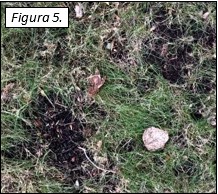
Comparte observaciones de gusanos saltadores a iMapInvasives.org para ayudar a los investigadores a desarrollar las mejores prácticas para prevenir su propagación.
Manejo:
Tácticas de prevención para limitar la introducción de gusanos saltarines y los capullos son actualmente los mejores métodos para controlar la propagación de estas poblaciones de gusanos invasores:
- Use solo suelo de buena reputación, así como compost y mantillo tratados térmicamente. Las altas temperaturas (>105°) pueden matar gusanos y capullos.
- Plante árboles de raíz desnuda o inspeccione el cepellón, el suelo y el mantillo de todas las plantas antes de plantar.
- Limpie herramientas, equipos o zapatos después de trabajar en áreas de jardines.
Hasta la fecha, no hay tratamientos efectivos documentados para controlar o erradicar las poblaciones existentes de gusanos saltadores. La investigación está en curso. Las precauciones para evitar mover involuntariamente gusanos saltarines de un área de una propiedad a otra son críticas. Para infestaciones pequeñas o en sitios más pequeños, recolectar los gusanos manualmente, puede con el tiempo, ayudar a reducir el número de capullos portadores de huevos en el sitio. Los gusanos pueden ahogarse en agua o sellarse en una bolsa de plástico, congelarse y desecharse en la basura.
UConn Extension se compromete a proporcionar igualdad de acceso y plena participación para las personas con discapacidades dentro de todos nuestros programas y actividades. Visite s.uconn.edu/accesibilidad para obtener más recursos. UConn es un proveedor y empleador de programas con igualdad de oportunidades. ©UConn Extension. Todos los derechos reservado. Actualizado en enero de 2022.
Los fondos para apoyar la creación de este documento fueron proporcionados por el Programa de Implementación de Extensión de Protección de Cultivos y Manejo de Plagas [subvención no. 2017-70006-27201 / adhesión al proyecto no. 013777] del Instituto Nacional de Alimentos y Agricultura del USDA.
FUENTES:
- Bezrutczyk, A., Bowe, A., Brown-Lima, C., Dávalos, A., Dobson, A., Herrick, B., McCay, T. & Wickings, K. (2021). Asian Jumping Worms: A Homeowner’s Guide. Cornell University. https://hdl.handle.net/1813/103692
- Chang, C.-H., Johnston, M. R., Görres, J. H., Dávalos, A., McHugh, D.,& Szlavecz, K. (2017). Co-invasion of three Asian earthworms, Metaphire hilgendorfi, Amynthas agrestis and Amynthas tokioensis in the USA. Biological Invasions, 20, 843–848. https://doi.org/10.1007/s10530-017-1607-x
- Dobson, A. (2020, May 1). Invasives, News, Pests: Jumping Worm Update. Connecticut Gardener. https://www.conngardener.com/jumping-worm-update/
- Kostromytska, O. (2021, July 23). Earthworm Invasion! Benefits and Risks. Pro Grow News Summer 2021. https://issuu.com/rick_r/docs/2_pgn_summer.21_digital_edition
- Rosen, J. (2020, January 23). Cancel Earthworms. The Atlantic. https://www.theatlantic.com/science/archive/2020/01/jumping-worms-are-taking-over-north-american-forests/605257/
- Wisconsin Department of Natural Resources. (n.d.). Jumping Worms: Amynthas spp. https://dnr.wisconsin.gov/topic/Invasives/fact/jumpingWorm
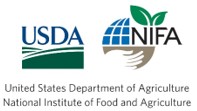
Funds to support the creation of this document were provided by the Crop Protection and Pest Management Extension Implementation Program [grant no. 2017-70006-27201/project accession no. 013777] from the USDA National Institute of Food and Agriculture.
